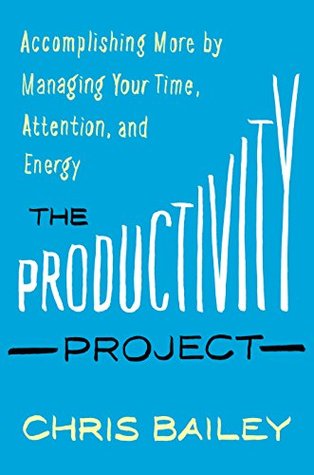More on this book
Community
Kindle Notes & Highlights
by
Chris Bailey
Read between
February 21 - March 13, 2024
Meditation had such a profound effect on my productivity because it allowed me to slow down enough so that I could work deliberately and not on autopilot.
But I’ve found that when you work on autopilot, it’s virtually impossible to step back from your work to determine what’s important, how to think more creatively, how to work smarter instead of just harder, and how to take control over what you’re working on instead of working on the tasks that other people throw (or in most cases, email) your way.
“Parkinson’s law” states that your work expands to fit the amount of time you have available for it. In my project, I found this law to be especially true with tasks that are low return.
As Allen writes in his book, “any ‘would, could, should’ commitment held only in the psyche creates irrational and unresolvable pressure, 24-7.”
This is a result of what Bluma Zeigarnik named the “Zeigarnik effect” in the late 1920s: incomplete or interrupted tasks weigh on our mind much more than completed tasks. After emptying my mind of everything that was weighing on it, I came to realize just how true this was as I experienced more space and clarity and felt less stress than I ever had before.
On average, it took participants 66.07 seconds to search for an email, and 72.87 seconds to find an email in a folder—and
Your brain is a powerful machine. But you have to capitalize on its strengths and accommodate its weaknesses. Giving it space to slip into daydreaming mode, while externalizing the tasks, projects, and commitments you’re working on, does exactly that.
when you aren’t giving your work your full focus, you simply aren’t spending your time or attention efficiently. One hour of intense focus on your work is worth two or three hours of focusing on your work 53 percent of the time.
This is also a cool hack to use when you’re working hard on something important: just keep a notepad by your desk and make a note of every distraction or interruption that pops up and tempts you to interrupt what you are working on. Then get back to work. And if you need to, deal with the would-be interruptions after.
Because here’s the oddest thing about multitasking: although pretty much every study has shown that it’s disastrous for your productivity, we all still strive to do it. Why? Because multitasking feels amazing.
The busier I became, the guiltier I felt when I focused on only one thing at a time, and the more I dreaded the experiment.
The “Pomodoro Technique,” developed by Francesco Cirillo in the 1980s, is a simple time-management technique that’s also very powerful. With the technique, you work on only one task for twenty-five minutes, and then take a five-minute break. After four periods of working for twenty-five minutes, you take a longer break
found that 28 percent of the U.S. population did not get any physical activity in the entire 2014 calendar year.
According to research conducted by Stanford psychologist Carol Dweck, the author of Mindset, the main thing that separates successful people from unsuccessful people is whether or not they feel their intelligence and abilities are fixed.
People who have a growth mindset believe that through hard work and persistence, they can accomplish more.
Ever since my project one of the very first things I’ve done after waking up has been to define the three things I wanted to accomplish over the course of the day.
The research backs this up; two studies found that deeper office friendships boost your job satisfaction by about 50 percent, and that you are seven times as likely to be highly engaged at work when your best friend works at the same place.


